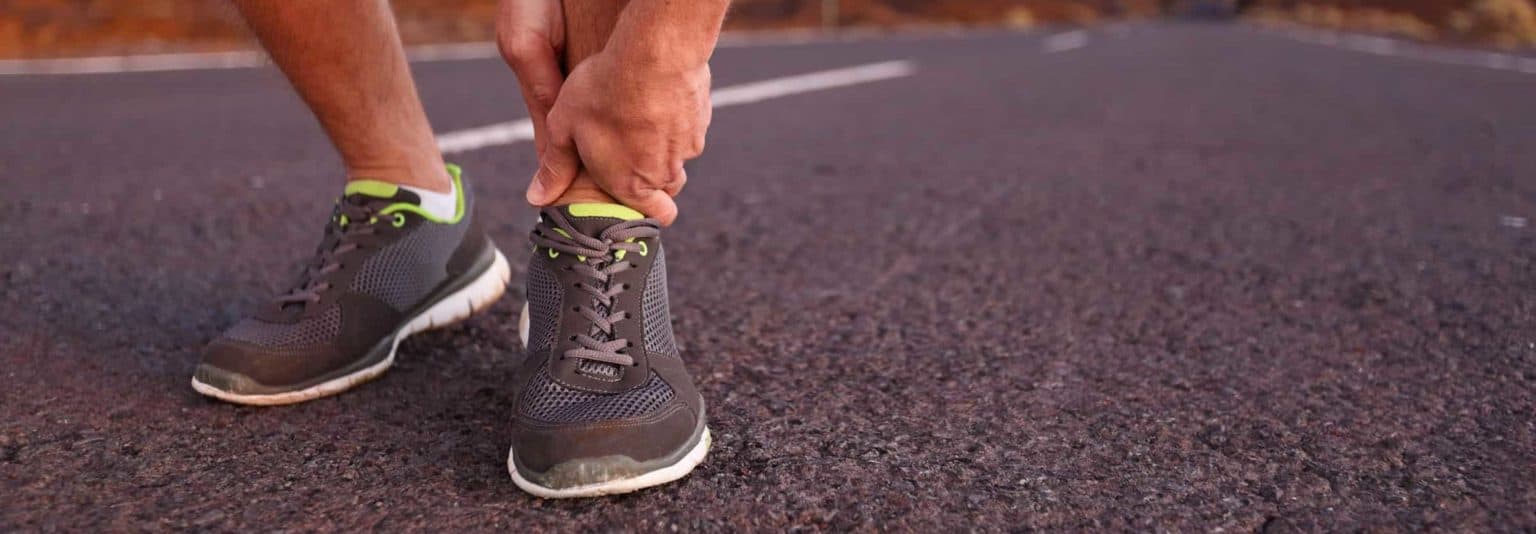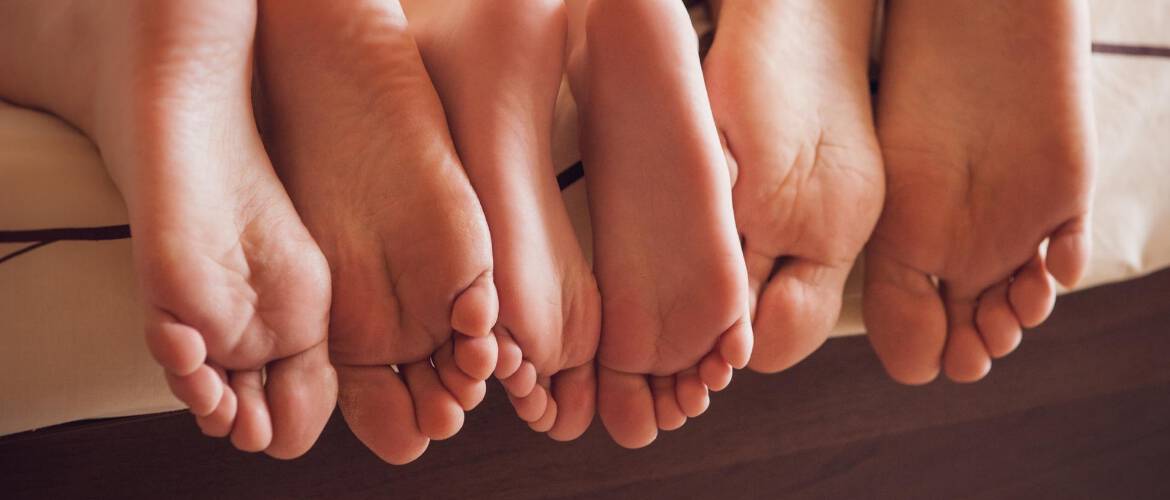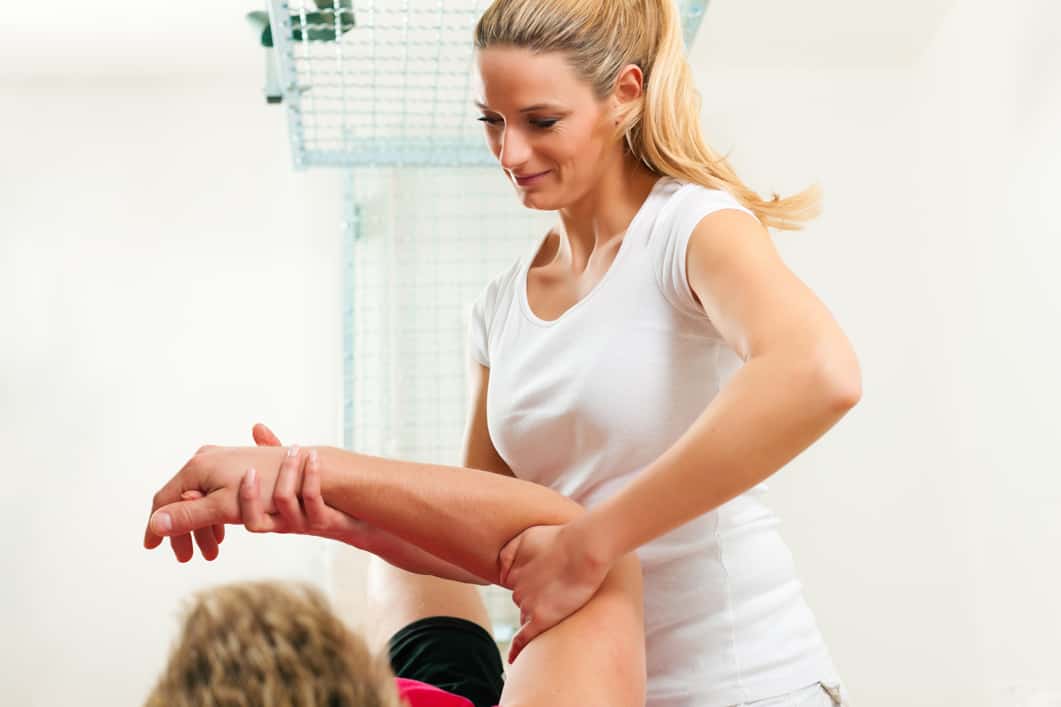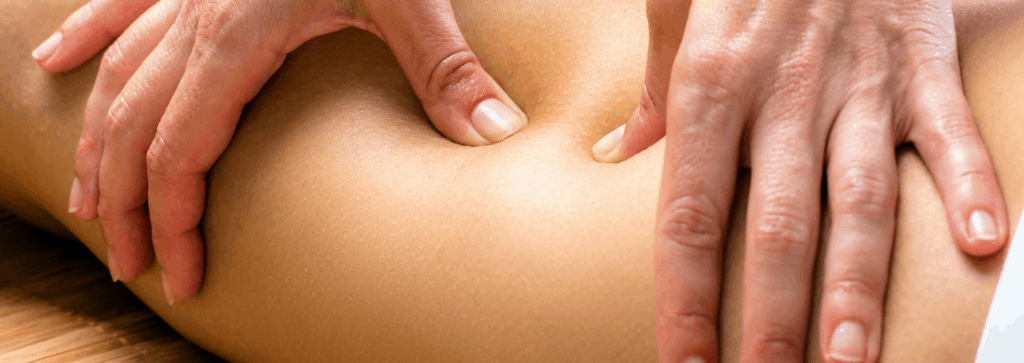Nicole Walker has written this great blog as a summary of the gluteal tendinopathy portion of the masterclass that we have been doing as part of our continuing education work on tendon problems.
What is gluteal tendinopathy?

Gluteal tendinopathy is the most common cause of pain over the lateral hip, that is the outside of the hip, at the greater trochanter.
It used to be called ‘bursitis’ or ‘trochanteric bursitis’ but it has been found that most commonly the problem is the tendon that attaches to the trochanter than the bursa itself.
The bursa can become inflamed too. You can think of the ‘bursitis’ as a symptom of the tendinopathy.
Research has established that the primary problem is poor load tolerance and ‘reduced health’ of the gluteus medius and minimus tendons (see the picture above).
Gluteal tendinopathy, can often interfere with sleep and have an impact on day to day life and physical function.
Who gets gluteal tendinopathy?
Really anyone can get gluteal tendinopathy, but the most common sufferers are:
- women around menopause
- younger females that run or play sport
- following having a hip joint problem
- it is more common in women than males (that’s not to say that it doesn’t happen in males)
- the number of people affected tends to increase with age
Lateral hip pain affects approximately 1 in 4 women over the age of 50 – most of these episodes are due to gluteal tendinopathy.
How do I know if I have a gluteal tendinopathy?

This is a list of common findings in people with gluteal tendinopathy:
- Localised lateral hip/greater trochanter pain
- Antalgic gait – an altered walking pattern, a limp, to help reduce pain
- Pain that warms up with activity (the pain is often better once moving)
- Pain at night laying on the affected hip
It is important to remember however, that everyone is different. If you are unsure, always seek professional advice from your Physiotherapist.
There are also often biomechanical factors related to the way someone moves that can predispose them to gluteal tendon injuries.
There are also ‘systemic’ factors that can be involved too, like more widespread issues in the body eg hormonal, endocrine system, autoimmune factors.
What causes gluteal tendinopathy?
Like all of the tendinopathies, one of the most common causes is a sudden change in activity or change in the amount and/or the intensity of an activity.
For example:
- if you started a new type of exercise, like running or even walking
- you made a rapid increase in the amount of this activity that you do in a week (increased volume)
- if you started doing more hills (increased load)
Any of these situations alone or combined could make you vulnerable to developing a tendinopathy.
The other situation that can make a gluteal tendinopathy more likely is compression of that portion of the hip.
An example of this might be sleeping on a firmer surface. Also something about the activity or the biomechanics of the activity that increases the compression of that tendon could provoke it.
A combination of compression and overloading the tendon is the most potent cause of tendinopathies.
What is the best treatment for gluteal tendinopathy?
The principles of treatment are:
- determining the current loading tolerance of the tendon ie how much load it can cope with and how well it recovers from being loaded
- assessing biomechanics and whether they are related to the problem
- acute management if required – passive therapies can have a place for pain relief in the early stages, but are not a long term solution
- reducing compressive loads
- strengthening of muscle groups that are contributing to poor mechanics
- planning a loading programme based on the current loading tolerance and the end goal eg return to sport
- more task-specific activities when able to be added into programme
Treatment is very much based on the individual.
One of the most important indicators will be how sensitive the tendon is to loading activities in the physical examination that are designed to elicit a response from the tendon.
The amount of pain with loading, and the delayed response to that loading the next day will help determine how much loading is required.
If the hip is very ‘acute’ or painful, some activity modification may be required.
Load management is an important part of the recovery process. The amount of load can be gradually increased as treatment progresses successfully.
The evidence on tendon rehabilitation makes it very clear that the right kind of exercise for the tendon is the most important part of treatment.
Loading exercise is what allows the tendon to become more resilient and cope with loads without flaring up and ‘freaking out’.
What about hands-on treatments?
Passive treatment such as massage, mobilisation, dry needling can help helpful in the early stages to reduce pain and tightness.
However, these are not the key component of the treatment in the long term – it is all about the right kind of exercise.
Something that is particularly important for gluteal tendinopathies is reducing the compressive loads.
In bed, it is best to avoid lying on the painful side (which you will instinctively do anyway).
Sleeping with a pillow between your knees further reduces the compressive forces on the gluteal tendon.
Some people find egg shell mattresses helpful or some other kind of soft underlay or topper.
Avoid sitting with legs crossed, this is sure to increase the compressive load regardless of whether it is hurting at the time.
Aim to stand from sitting without allowing your knees to come close to each other – imagine standing up like you are on a horse ie with your knees a distance apart.
If you have a tendon problem, whether it is a gluteal tendon problem or any other tendon, call us on 8356 1000 or book a time online to speak with a physio today.
You can download your copy of a free guide that we have created called ’25 Tendon Facts To Help Solve Your Tendon Pain’ – just click here.















